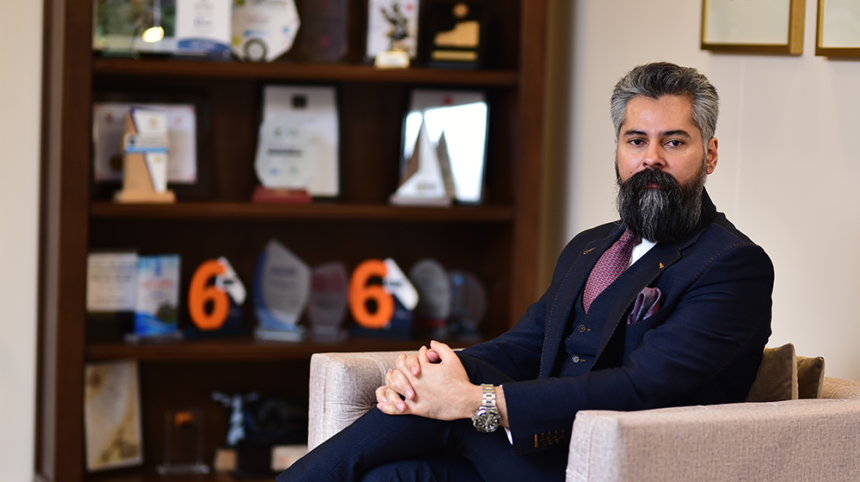According to Mr Kabeer Naqvi, President & CEO of U Microfinance Bank (U Bank), “Pakistan has a lack of brick and mortar bank branches, especially at the last mile locations, and we need to focus more on scaling geographically if we wish to create a larger impact as a microfinance bank.”
Mr. Naqvi discussed the distinctions between microfinance banks and commercial banks in Pakistan during the discussion on the current state of the microfinance sector in Pakistan, as well as its potential, growth, and effect. Since we mobilise deposits, we are just like any other bank in terms of liabilities. On the asset side, though, we continue to be goal-driven. We serve those societal groups that have been cut off from financial services for many years as a mission-driven bank.
Banking plays a crucial part in financial inclusion, helping people to expand their economies and improving communities. It also provides a way to integrate the unbanked into the financial system and create a productive, transparent economy. Through an ordinance passed in 2001, microfinance banks (MFBs) were founded to provide financial services to a larger segment of the Pakistani population, particularly those who are frequently overlooked by commercial banks for a variety of reasons.
Microfinance Bank’s versus Commercial Banks:
“Our customers’ needs are generally similar to those of traditional banks. A farmer would also want aid with building a home, paying for healthcare, sending his kids to school, and possibly even starting a business. They have requirements for payments, credit, savings, insurance, and so on. The company concept and experience make a difference, he said. MFBs, on the other hand, go to the customer’s premises, be it a farmer, a livestock owner, or a small kiryana store vendor, and work with income proxies and potential cash flows to evaluate loan approvals. A regular commercial bank, on the other hand, might not give out a loan without an audited bank statement or a salary slip from a customer. This ability not only sets MFBs apart but also gives them access to a wider audience.
Digital banking is not incompatible with physical branches:
In Pakistan, U Bank has more than 300 bank branches, the bulk of which are in rural regions, making it the largest microfinance institution at the moment. According to Mr. Naqvi, this number will reach 400 by the end of 2023, and it will increase during the ensuing years. This is a dramatic departure from the accepted industry standard. As part of the nation’s aspirations for digital transformation, most banks are increasingly concentrating on digital banking and working towards automation. At this point, maintaining an aggressive concentration on physical and mortar banking branches may draw criticism from the larger sector, as digitization is required to bring efficiency and expand the institution along with it.
Speaking about his own experience, Mr. Naqvi stated, “Our data can readily indicate the huge potential of brick and mortar presence in Pakistan, even though we haven’t yet implemented our digital strategy on a wide scale. Human to human interaction is a crucial component of loan distribution in rural areas and cannot be completely disregarded in the present. Cash flows must be generated, a customer’s potential income must be assessed, loans must be made, and most crucially, they must be repaid. For the time being, the first point of contact cannot only be a mobile app if we want to be a bank of the masses, the majority of whom live in rural Pakistan.
Brick and mortar and digital banking need to work together; they cannot be mutually incompatible. However, a deeper comprehension of the socioeconomic circumstances of the diverse group of customers you serve is necessary. Through financial services, literacy, and inclusion, we are aiming to move people up the income scale and provide them access to the economy. In order to truly become a challenger retail bank, we are scaling out physically while simultaneously relaying digital rails utilising our local knowledge.
Performance Measures and the Sustainability of Business:
Mr. Naqvi offered some statistics when discussing the growth trajectory of U Bank and the numbers that back up the bank’s expansion plans. “In only the previous seven years, we have increased our total deposits from PKR 1 billion to PKR 100 billion, our gross loan portfolio from PKR 600 million to PKR 62 billion, and we have raised additional independent investments in treasury worth PKR 125 billion, which is unusual for us. Our six revenue-generating business divisions are organised according to a canvas-based business model, which has generally been able to achieve this exponential development through physical banking branches alone.
During the COVID-19 crisis in 2020, U Bank strategically segmented its business functions into six categories: corporate banking, Islamic banking, rural retail banking, urban retail banking, and digital banking. This action was taken to ensure the viability and longevity of the firm during these unpredictable times..
Without social inclusion, financial inclusion cannot exist:
In order to increase income and quality of life, communities should have access to formal financial services that can be used to build their enterprises, farms, or other endeavours. It integrates populations who are excluded from and underserved by the official financial system. Without initiatives aimed at integrating socially the disadvantaged groups in society, this is, however, not totally practicable.
In anecdote from his own experience, Mr. Naqvi said, “Over the years, we have dismantled numerous antiquated policies and procedures that may have served as obstacles to the general inclusion of the public. For instance, women were not permitted to take out loans without their husbands’ consent, or the loans they received were lower than those offered to males with comparable earnings. When we discuss inclusion, we don’t only mean the banking industry; we also mean the entire social harmony and equality that can be attained through inclusivity.
Regulation and National Discussion for Significant Scale in the MFB Sector:
In a nation with over 230 million people, a sizable portion are still unbanked and not part of the formal financial system. The regulatory authorities in Pakistan have been working relentlessly to assist the general public and bring them into the financial system, but more national dialogue and collaborations are needed to scale these activities.
“With the population growing, the problem’s size is simply increasing because the scale isn’t quite large enough. The regulation has improved and been very helpful, and I am confident that over time, the microfinance industry will be offered more prospects for expansion.
A greater impact is unavoidable if MFBs are given the opportunity to develop into full-scale retail banks, given access to discount windows like commercial banks, and given the ability to become scheduled banks. As the conversation came to a close, Mr. Naqvi said, “I would like to see national level dialogue including the public and private sector and the academia to devise real and impactful interventions, especially when it comes to Green Banking.







